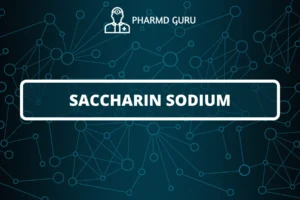Citric acid is a naturally occurring organic acid found in citrus fruits such as lemons, oranges, and grapefruits. It is widely used in the food and beverage industry as an acidulant, flavor enhancer, and preservative. Here’s some information on the preparation, test for purity, assay, and medicinal uses of citric acid:
SCROLL DOWN TO THE BOTTOM OF THIS PAGE FOR ACTUAL NOTES.
Preparation of Citric Acid:
Citric acid can be prepared through several methods, including:
- Fermentation: Citric acid is commonly produced by the fermentation of sugars using specific strains of mold, such as Aspergillus niger. The mold converts sugars into citric acid through metabolic processes.
- Chemical extraction: Citric acid can also be extracted from citrus fruits by crushing and pressing them to obtain the juice. The juice is then subjected to various processes, such as filtration, concentration, and precipitation, to isolate and purify citric acid.
Test for Purity of Citric Acid:
Several tests can be conducted to assess the purity of citric acid, including the following:
- Melting point determination: The melting point of pure citric acid is around 153-159°C. A melting point analysis can be performed to check if the observed melting point matches the expected range.
- High-performance liquid chromatography (HPLC): HPLC analysis can be used to determine the impurity profile and quantify any impurities present in the citric acid sample.
Assay of Citric Acid:
An assay is performed to determine the concentration or purity of citric acid in a given sample. The assay method for citric acid typically involves titration with a standardized base or acid solution to measure the acid content.
Medicinal Uses of Citric Acid:
Citric acid has limited direct medicinal uses but can be used as an excipient or acidifier in pharmaceutical formulations. It is often included in oral solutions, effervescent tablets, and syrups to enhance palatability and stability. Citric acid can also be used as a chelating agent to improve the solubility and absorption of certain medications.
Additionally, citric acid is used in certain medical procedures as a component of contrast agents used in diagnostic imaging, such as in magnetic resonance imaging (MRI).
It’s important to note that the primary applications of citric acid are in the food and beverage industry, where it is used as an acidulant, preservative, and flavoring agent. It is generally recognized as safe (GRAS) by regulatory authorities when used in accordance with approved levels.
ACTUAL NOTES:
PATH: PHARMD/PHARMD NOTES/ PHARMD FIRST YEAR NOTES/ ORGANIC CHEMISTRY/ PHARMACEUTICAL ORGANIC CHEMISTRY/ CITRIC ACID..




